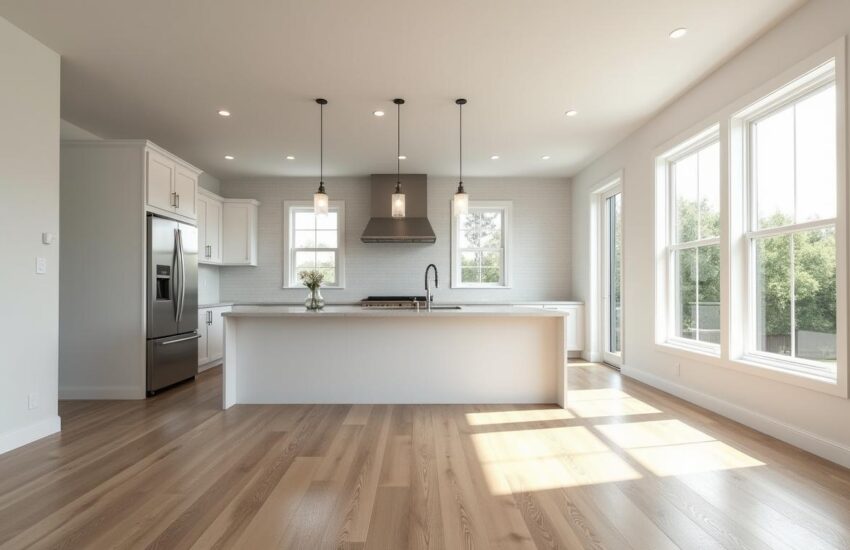
Harnessing the power of the sun has never been more popular or more accessible than it is today. With concerns about energy costs and environmental impact becoming a priority for many, the spotlight has turned toward renewable energy sources, particularly solar panels. As more homeowners contemplate making the leap into solar energy, it's crucial to understand what solar panel installation entails, the benefits it offers, and key considerations before committing. This comprehensive guide dives into the critical facts that homeowners need to know about solar panel installation.
Contents
Understanding Solar Panel Installation
Solar panel installation is a process that converts sunlight into electricity, typically for residential use. The installation involves placing solar panels on a building’s roof or ground-mounted systems, connecting them to an inverter, which converts the solar energy into usable electricity, and integrating with the home’s electrical system.
The Basics of Solar Technology
Solar panels consist of photovoltaic cells that capture sunlight and convert it into direct current (DC) electricity. An inverter then changes this DC into alternating current (AC), which can power your home. The efficiency of this process is key to understanding how much energy your system can generate, and consequently, how much you can save on your energy bills.
Types of Solar Panels
There are three primary types of solar panels available for residential installation:
-
Monocrystalline Solar Panels: Known for high efficiency and sleek design, these panels are made from a single crystal structure. They're an excellent choice for smaller roofs where maximizing energy production per square foot is important.
-
Polycrystalline Solar Panels: Often considered less efficient than monocrystalline, these panels are made from multiple crystal fragments. They are generally more affordable and are suitable for homes with ample roof space.
-
Thin-Film Solar Panels: These are less efficient but are lightweight and flexible, making them versatile for various applications beyond conventional roof mounting.
Benefits of Installing Solar Panels
Investing in solar panels offers several advantages, both to homeowners and the broader environment.
Financial Savings
One of the most compelling reasons to install solar panels is the potential for substantial savings on electricity bills. By generating your own power, you can drastically reduce your dependence on the grid, leading to long-term financial savings. Moreover, many states offer incentives, tax credits, and rebates that can offset installation costs.
Environmental Impact
Solar energy is a clean, renewable resource. Transitioning to solar reduces your household's carbon footprint and contributes to a more sustainable energy future. By tapping into solar power, you help decrease reliance on fossil fuels and lower greenhouse gas emissions.
Increased Home Value
Homes equipped with solar panels tend to increase in market value. As green energy becomes more desirable, properties with solar systems can attract buyers willing to pay a premium. Research shows that homes with solar installations often sell faster and at higher prices.
Key Considerations Before Installation
Before proceeding with installing solar panels, homeowners should evaluate several factors to ensure they make an informed decision.
Home Energy Needs
Assess your home's average energy consumption to determine how many panels you might need. Your energy usage history, along with regional sunlight exposure, will influence the size and type of the solar system suitable for your home.
Roof Condition and Orientation
The condition and orientation of your roof are critical. A roof needing repairs is not ideal for installation, as panels should have a lifespan of 25+ years. Additionally, a south-facing roof without shade provides the best conditions for solar energy generation. Consider hiring a professional to assess your roof for suitability.
Costs and Financing
Initial costs can be a hurdle for many homeowners. However, options like solar loans, power purchase agreements (PPAs), and leasing can make solar more accessible. It's essential to compare these options and understand the long-term financial impacts, including potential savings.
The Installation Process
Understanding the installation process helps in preparing for the transition.
Step-by-Step Guide
-
Consultation and Site Assessment: Engage with a reputable solar provider who will evaluate your property's viability for solar installation, considering factors like location, roof angle, and shading.
-
System Design: Based on the assessment, professionals will design a customized solar system. This design considers system size, panel placement, and energy needs.
-
Permits and Approvals: Obtaining necessary permits and meeting local government regulations is essential. Your solar provider usually handles this process.
-
Installation: The actual installation of panels, inverters, and related equipment can take from one to three days, requiring minimal disruption to your daily life.
-
Inspection and Activation: The system must be inspected and approved by local authorities before it is activated. Once done, your home begins reaping the benefits of solar power.
After Installation: Maintenance and Monitoring
Post-installation maintenance is relatively minimal compared to other home systems.
Regular Maintenance
Keeping solar panels clean and free from debris maximizes efficiency. Scheduling a professional clean once or twice a year can ensure optimal performance.
Monitoring Systems
Many solar providers offer monitoring systems that allow homeowners to track energy production in real time. This feature helps in managing and optimizing energy usage daily.
Conclusion
For homeowners considering solar panel installation, understanding the intricacies of the technology, benefits, and installation process is crucial. While the upfront investment can be significant, the long-term savings, environmental benefits, and potential increase in home value make it an attractive option. By evaluating energy needs, roof suitability, and financial options, homeowners can wisely choose a solar solution that meets their needs. As the world moves towards more sustainable forms of energy, solar panels represent a key step in reducing reliance on nonrenewable resources and achieving energy independence.



Leave a Reply
You must be logged in to post a comment.